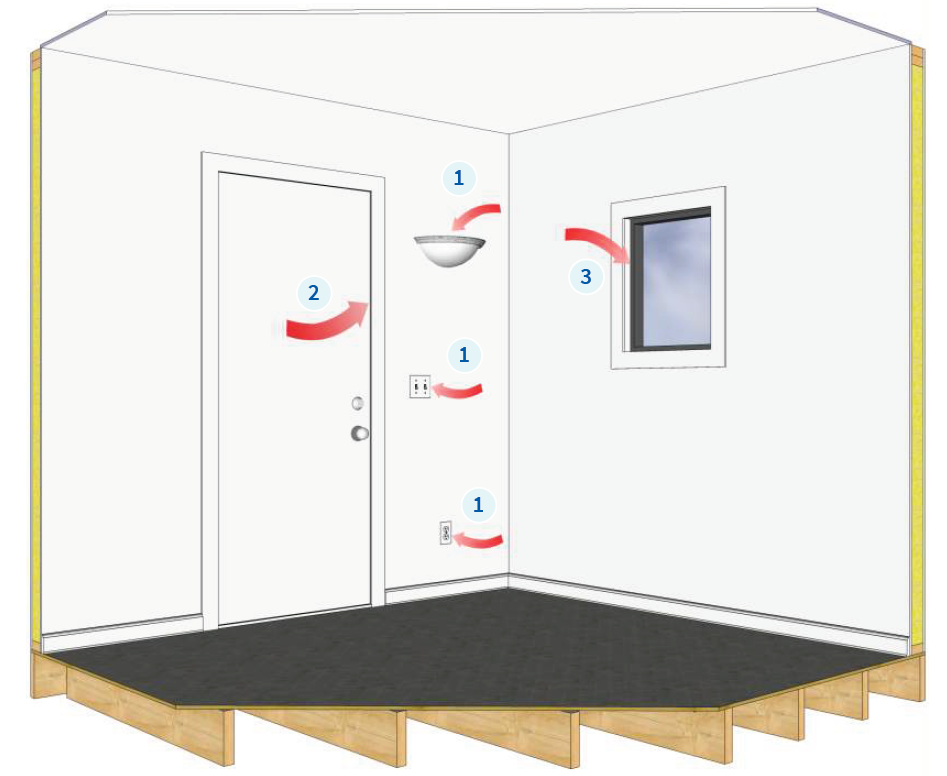Air Sealing Considerations for Above-Grade Walls Interior Approach
Air sealing the walls of a house consists mainly of sealing all large openings and service penetrations. Exterior doors and windows can be significant sources of air leakage, and small electrical fixtures and service penetrations can also contribute to air leakage. Most air sealing can be accomplished with gaskets, sealants, and spray foam, but if larger holes are to be sealed, more robust air sealing procedures may be needed. Note: Use fire-resistant silicone sealant around hot exhaust vents and chimneys. Note: Other interfaces like rim joists and wall intersections are not included due to the extensive work required. If major interior work is planned, see Considerations for Interior and Exterior Retrofits and Typical Air Sealing Locations at Below-Grade Walls.
Typical Interior Air Sealing Locations and Procedures at Above-grade Exterior Walls:
- Seal electrical receptacles, light fixtures, and other small wall fixtures behind the trim plates with acoustical sealant or foam gaskets (to prevent permanent adhesion).
- Seal and adjust exterior doors using adhered weather stripping and gaskets.
- Seal window frames with polyurethane sealant. Adjust and seal operable windows using adhered weather stripping and gaskets.
